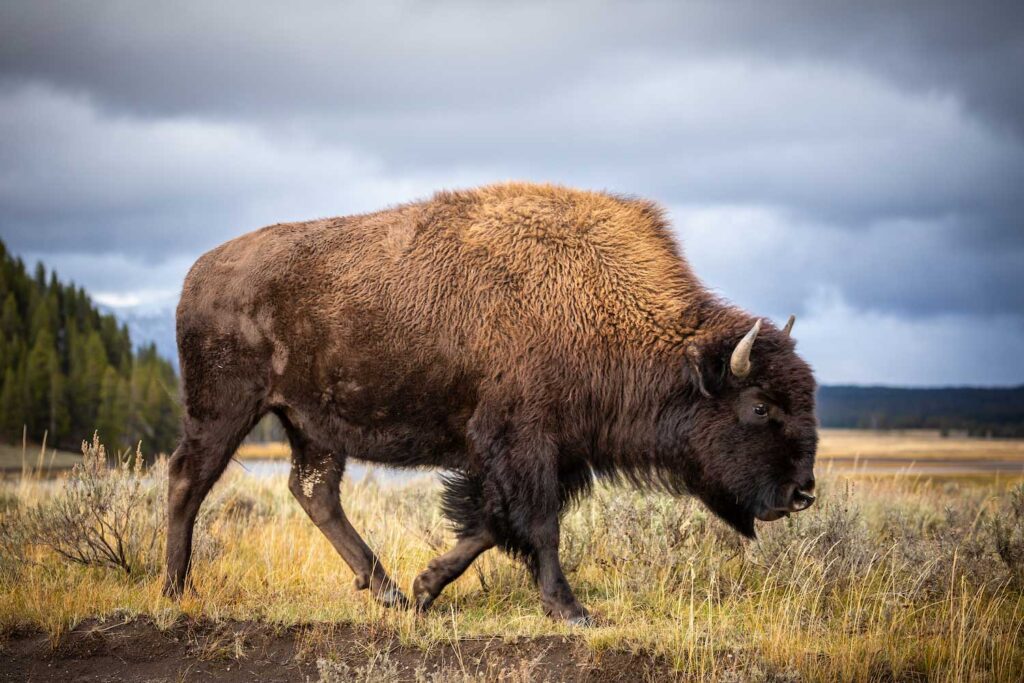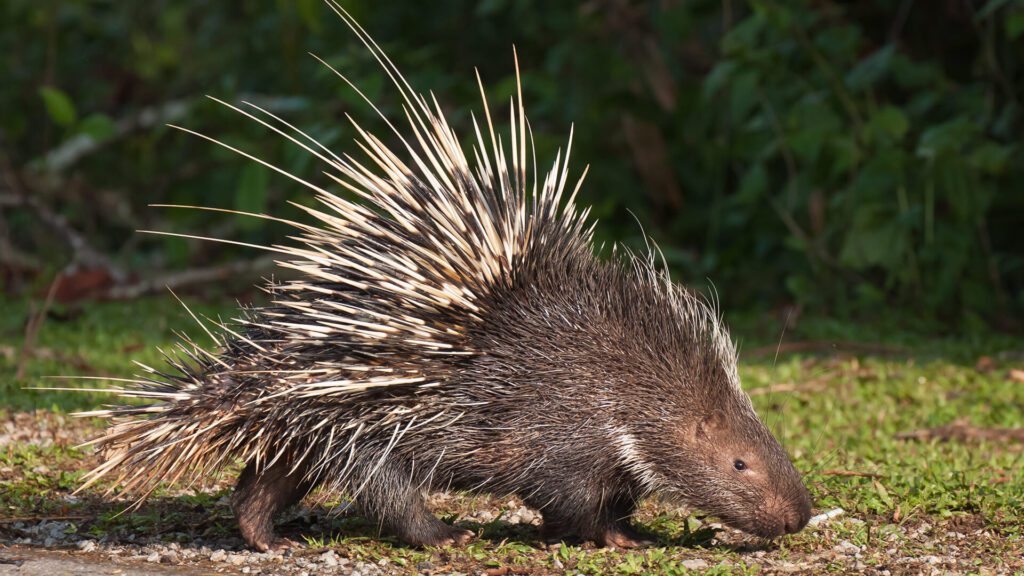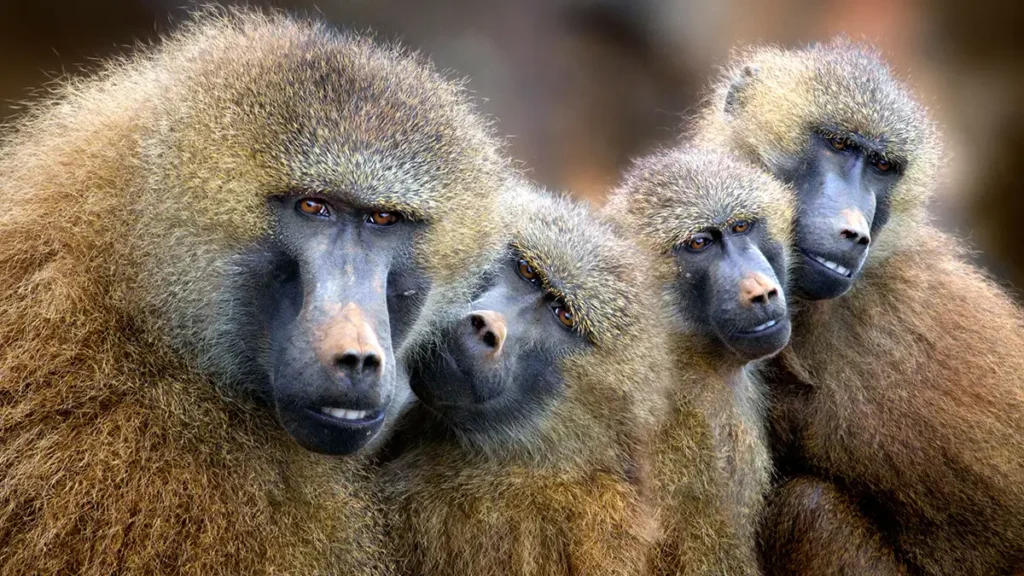Lions, the majestic kings of the animal kingdom, are renowned for their strength, power, and regal presence. But as the saying goes, even the mightiest can have their weaknesses. So, who dares to challenge these formidable felines? In this wild journey, we will uncover the top five natural enemies that dare to take on the kings of the savannah. From cunning hyenas to spiky porcupines, get ready to dive into the thrilling world of what eats lions. So, grab your safari hat and prepare for a wild ride!
The Natural Enemies of Lions
Even the majestic lion, frequently hailed as the ‘King of the Jungle’, isn’t exempt from the threat of natural enemies. Although lions are recognized as formidable apex predators, they don’t rule the animal kingdom unchallenged. Several species, including hyenas, buffaloes, crocodiles, porcupines, and baboons, pose significant threats to these regal beasts. Let’s delve deeper into these intriguing interspecies dynamics.
| Species | Threat Level | Reason |
|---|---|---|
| Hyenas | High | Hyenas, as scavengers and predators, are known to challenge and sometimes even kill lions. |
| Buffaloes | High | Buffaloes have immense strength and can kill lions that pose a threat to them. |
| Crocodiles | Medium | Crocodiles can attack and devour lions near water bodies. |
| Porcupines | Low | Although not predators, porcupines’ sharp quills can severely injure lions, making them a threat. |
| Baboons | Low | Baboons can kidnap and harm lion cubs, posing a considerable threat to young lions. |
Understanding these relationships not only illuminates the intricate web of survival strategies in the wild but also underscores the delicate balance of power that exists even among the most feared predators. The lion’s struggle for survival against these natural enemies serves as a stark reminder of the ruthless, yet fascinating, laws of the jungle.
Hyenas: The Arch Nemesis
In the vast landscapes of the African savannah, where survival is a daily game played by every creature, the lions often find themselves at odds with a peculiar foe – the hyena. These creatures, often portrayed in popular culture as mere scavengers, are in fact, one of the most formidable adversaries the lion faces in the wild.
Hyenas, with their hunched backs and cackling laughter, are the epitome of opportunistic behavior. They are known for their audacity to steal a lion’s hard-earned kills, turning the hunter into the hunted. This rivalry, however, extends beyond a mere contest for food.
Read more about: Are These the 10 Largest Wolves on the Planet? Unveiling the Mighty Beasts
The hyenas’ strategy of survival involves targeting the most vulnerable members of the lion’s pride- the cubs. This tactic, while seemingly cruel, is a stark reminder of the unforgiving rules of the wild. Yet, it’s not as if hyenas can simply stroll into a lion’s abode and snatch away their cubs. It is a dangerous game – for it takes a group of up to 10 hyenas to challenge a lioness and twice that number when it comes to the king – the male lion.
Despite their strength in numbers, the hyenas remain a significant threat to the lions, specifically their young ones. In the animal kingdom, survival often comes down to strength, agility, and, most importantly, strategy. As such, hyenas, with their cunning tactics and relentless pursuit, continue to be a formidable foe to the lions.
Read more: What Eats Elephants? Discover the Predators Threatening These Majestic Beasts
So, when you think of what eats lions or poses a threat to their survival, it’s not just the stealthy baboons or the unassuming porcupines. It’s also the laughing, hunched-backed figures of the hyenas, constantly lurking on the edges of the lion’s territory, waiting for an opportunity to strike.
Buffaloes: The Defensive Giants of the Savannah

buffalo
In the grand spectacle of the African wilderness, a surprising nemesis stands firmly against the lion: the African buffalo. Syncerus caffer, as they are scientifically known, are not just potential meals for the King of Beasts; they are powerful and formidable adversaries.
Often underestimated, these colossal creatures are the embodiment of raw power and tenacity. Grazing peacefully in their herds, they might seem like easy prey for a pride of lions. However, when threatened, they transform into veritable tanks, defending themselves and their kin with a courage that is awe-inspiring.
Buffaloes have been documented to have fought back fiercely when under attack. The sight of a buffalo charging with its massive horns is enough to make even the most daring predator think twice. There are numerous accounts of buffaloes trampling and killing lions in their bid to defend their herd, turning the tables on the hunters in a dramatic twist of events.
“With their massive size and strength, buffaloes can easily win a one-on-one battle against a lion. This defensive behavior makes them one of the deadliest adversaries of the lions.” – Anonymous Wildlife Observer
Such encounters are not just about survival, but also about the assertion of power. It’s a stark reminder that in the wild, size and strength can be a game-changer. The lion, often symbolized as the epitome of power, finds a worthy opponent in the African buffalo.
Contrary to the common belief that lions are invincible, the reality of the African savannah presents a different story. The lion’s reign is not without contest. Each animal, no matter how mighty, has a counterforce in nature. The African buffalo, with its impressive strength and defense tactics, serves as a compelling example of this natural balance of power.
Crocodiles: The Underwater Threat
Imagine a lion, the king of the African savannah, venturing near a water body, unaware of the lurking danger beneath the surface. This is where the crocodile, another apex predator, comes into the picture. Crocodiles are not just any threat; they pose a unique underwater challenge to lions, turning their confident strides into cautious tiptoes when near water bodies.
Why are crocodiles such a formidable adversary for lions? The answer lies in their stealthy aquatic prowess. Crocodiles lay in wait, camouflaged beneath the water’s surface, eyes and nostrils just above the water level, patiently observing every movement on the shore. Their targets are often unsuspecting animals that come to drink or cross the river, and in this case, our protagonist – the lion.
Also check out: Leopard vs. Cougar: What Makes Them Different and Who Prevails in a Battle?
When a lion steps into the water, whether to quench its thirst or cross to the other side, it unwittingly becomes a potential meal for the crocodile. Without the solid ground beneath their paws, lions lose their primary advantage – their speed and agility. On the other hand, crocodiles thrive in water, with their powerful tails propelling them forward for a sudden attack.
But the crocodile doesn’t immediately strike. They bide their time, waiting for the perfect moment when the lion is at its most vulnerable. Exhausted from swimming and with its guard down, the lion becomes an easy target. And that’s when the crocodile strikes, launching itself out of the water and clamping its powerful jaws around the lion, dragging it underwater. The underwater environment, where the crocodile reigns supreme, inevitably tips the scale in their favor.
This underwater clash of titans showcases the brutal yet fascinating interplay of power dynamics in the wild. It reminds us that even the lion, often deemed the king of the jungle, has its own set of challenges to face, and that no single animal rules unchallenged. As we delve deeper into the next section, we will discover more surprising threats that lions contend with in their daily struggle for survival.
Porcupines: The Spiky Danger

porcupine
After considering the muscular buffaloes and stealthy crocodiles, one might find it hard to believe that the unassuming porcupine could pose a significant threat to the mighty lion, the king of the jungle. Yet, the reality of the wilderness paints a different picture. The porcupine, with its seemingly harmless stature, has proven to be a lethal adversary for lions.
What makes this little creature so dangerous? The answer lies in its unique defensive mechanism. The porcupine’s body is covered with sharp, needle-like quills that act as their primary form of defense. When a lion, driven by hunger, attacks a porcupine, it risks severe injuries.
“The sharp spikes or quills of a porcupine can penetrate the heart or major arteries of a lion, leading to severe injuries or even death.”
Historically, porcupines have been known to kill not just lions, but also leopards, and hyenas. The spiky quills penetrate the predator’s skin and lodge themselves deep into the flesh. Over time, they can migrate, puncturing vital organs and leading to fatalities. This unexpected lethality of the porcupine reminds us that size and strength are not the only determinants of survival in the wild.
For more similar posts check out: What Eats Tigers? Discover the Top Predators That Prey on Tigers as well as Are Lions Friendly or Fierce? Unveiling the Truth about Their Nature and Interaction with Humans
As we venture deeper into the African savannah, we’ll encounter more surprising enemies of the lion, each with its unique ways of posing a threat to the king of the jungle. Next, we explore the curious case of baboons, the stealthy kidnappers.
Baboons: The Stealthy Kidnappers

baboons
In the hierarchical tapestry of the African savannah, a surprising figure emerges as an adversary to the lion: the baboon. Often underestimated due to their size, baboons pose a unique threat that few can match. Their weapon? Stealth and cunning.
Unlike the brutish strength of a buffalo or the sharp quills of a porcupine, the danger that baboons bring to lions is far more insidious. Baboons, with their keen intelligence and deft agility, are known to be audacious kidnappers of lion cubs.
When opportunity presents itself, these primates do not hesitate to skulk into the heart of the lion’s territory, absconding with the unprotected young. The lion cubs, too small to defend themselves, fall easy prey to these unanticipated kidnappers.
Such an act is a significant blow to the pride, not only due to the loss of potential successors but also because it disrupts the social dynamics within the group. It’s also a grim reminder of the harsh reality of the wild: survival isn’t solely dependent on size or strength. It’s a game of wits, and baboons, with their stealth and audacity, are formidable players.
However, it’s important to note that this isn’t an act of predation in the traditional sense. Baboons, primarily herbivorous, do not kill lion cubs for sustenance. Rather, it’s a hostile act, a stark display of dominance in the face of one of the most powerful predators on the African plains.
Read more: Unveiling the Secrets of a Lion’s Tongue: All You Need To Know
Thus, the unexpected threat that baboons represent amongst the natural enemies of lions is not one to be taken lightly. Despite their size and seemingly harmless appearance, they remind us that in the wild, the line between prey and predator can blur at any given moment.
Conclusion: The Unanticipated Threats to Lions
The King of the Jungle, the lion, is often viewed as an unbeatable force in the wild, but its reign is not without challenges. Lions, despite their status as apex predators, are vulnerable to threats posed by other wild animals. Their encounters with these creatures showcase the unpredictable dynamics of the wild and underscore the fact that no species is truly invincible.
Read more: Alligator vs. Crocodile: How to Distinguish Them and Determine the Ultimate Champion
The relentless hyenas, for instance, are known to attack a cub or a sickly lion. Hyenas, the most common large predators in Africa, often scavenge and pose a constant threat to lions. As our understanding of the wild deepens, it’s evident that the number of hyenas required to take down an adult lion can range from 10 to 20.
Buffaloes, with their immense strength, can not only defend themselves but also pose a significant threat to lions. The buffalo’s might is so formidable that they can potentially win a one-on-one battle with a lion. This might come as a surprise considering the lion’s reputation as a dominant predator.
Then, there are the crocodiles, the underwater threat, which are known to attack tigers, another apex predator. Tiger cubs, much like lion cubs, are vulnerable to these silent predators, reflecting the universal threats faced by young carnivores in the wild.
However, the threats to lions are not just limited to these large predators. Porcupines, with their sharp quills, are capable of inflicting serious injuries and even causing death. And baboons, with their intelligence and agility, are audacious enough to kidnap lion cubs, a tactic that disrupts the lion pride’s social dynamics.
Check out: How Strong Are Orangutans? Discover Their Astonishing Power!
In this intricate web of predator-prey relationships and interspecies competition, survival is not just about brute strength or size. It’s about wits, cunning, and adaptability. The survival of the lion, like all creatures, depends on its ability to navigate these complex relationships and threats.
The lion’s journey is a testament to the complexity and balance of nature. It highlights how every creature, no matter how strong, faces challenges that they must overcome in their quest for survival. This serves as a reminder that the wild is not a place for the strongest, but a place for the most adaptable.
Lions have a few natural enemies, including hyenas, buffaloes, crocodiles, and baboons.
Hyenas are one of the lions’ worst enemies. They often go for the cubs or dead lions. It takes up to 10 hyenas to take down a lioness, and the number doubles with a male lion.
Buffaloes have been recorded trampling and killing lions. They often defend themselves by killing lions and other threatening animals.
Crocodiles are natural enemies of lions. They attack lions underwater when the lion is exhausted, especially when lions try to cross rivers or bodies of water where crocodiles are present.

